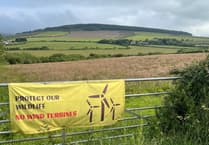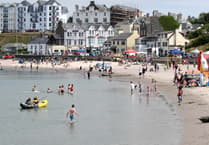There would be a high risk of contamination to the drinking water supply if an on-shore wind farm was built at Sulby, documents released by Manx Utilities show.
An alternative site at Earystane and Scard in the south of the island would be more cost-effective but have a larger visual impact.
And if larger turbines were used there a dedicated landing stage would have to be constructed at Castletown beach – which would add £10m to the cost and have a high environmental impact.
Delivering at least 20MW of electricity from renewable sources is part of the government’s ‘Island Plan’ and Ministers committed to an onshore wind project in February.
Figures released by Manx Utilities in a site selection document dated July 4, before Tynwald agreed to further exploring options, reveal that building a wind farm in the island could cost about £40m.
A study by consultants Bureau Veritas in 2022 identified three suitable onshore wind farm sites from more than 500 sites across public estate.
But one of these – Baldwin and Injebreck – was subsequently ruled out and the document shows why. It says a maximum of 6MW capacity could be installed, there are old mine shafts on the site, access is poor and several buildings including a church will need to undergo compulsory purchase to remove the obstruction.
Of the two remaining options, the report says the lowest cost one is the installation of five 4.2MW turbines at Earystane and Scard with a price tag of £30m compared to £40m for Sulby and Druidale.
Sulby and Druidale would cost £10m more because extra turbines would be required to achieve the 20MW target.
The northern site has the lowest visual impact of the three sites that were short listed.
With an average wind speed of 8.5m/s, it could produce at least 81GWh per year, which the report says is a good yield for onshore wind.
But the turbines would be limited to 2–3MW, given the road access and their lower height and faster rotation speed carries a greater risk of impact to birds of prey.
And there is another disadvantage.
The report notes that heavy metal deposits (aluminium, manganese and iron) have been found in and around the Sulby reservoir and its tributaries, which could be disturbed during construction works.
It states: ‘The risk of contamination to Sulby drinking water supply is therefore high which would also have a knock on impact at Baldwin reservoir because of the shared feeder. This could be mitigated but would require substantial capital investment for both the project and for Manx Utilities Water infrastructure.’
Earystane and Scard has a higher average wind speed of 10.1m/s, which would allow it to produce 130GWh per year, making it one of the highest performing wind farms in the British Isles.
While the lowest cost option is the installation of five 4.2MW turbines there, the lowest manufacturing cost option would be to install four larger 5MW turbines. But with each having a rotor span of 63m, a dedicated marine access ramp would have to be constructed at Castletown beach at an additional cost of £10m.
This would need to remain in place for the full life-span of the windfarm and would likely have a high environmental impact if required.
‘Despite this additional large infrastructure cost, it is still a more cost effective option than either of the Sulby and Druidale options,’ states the report.
There are viable transportation routes from Castletown beach via the Airport for the 4.2MW turbines currently without any additional landing stage.
Consultants advised that the operational and maintenance cost of the smaller turbines proposed for Sulby and Druidale would incur higher operation and maintenance costs over the lifetime of the project.
The report admits there is ‘no such thing as a perfect site for onshore wind’.



.jpeg?width=209&height=140&crop=209:145,smart&quality=75)

Comments
This article has no comments yet. Be the first to leave a comment.